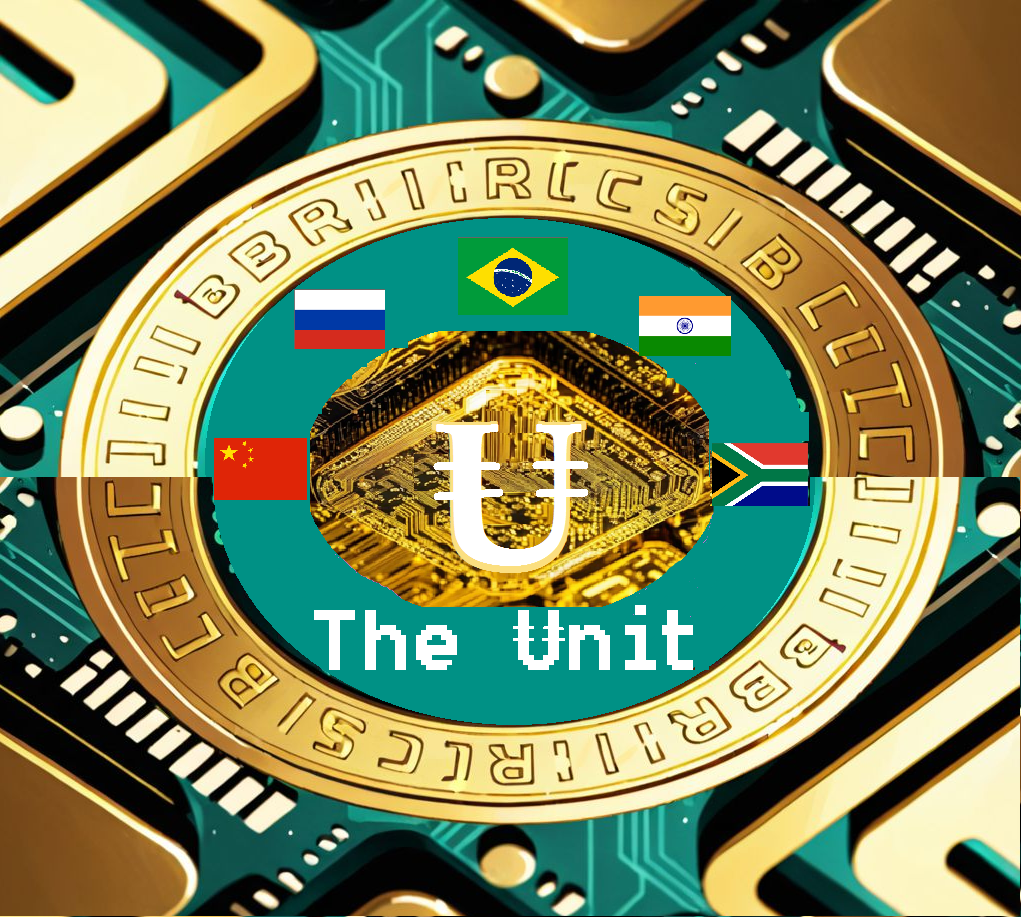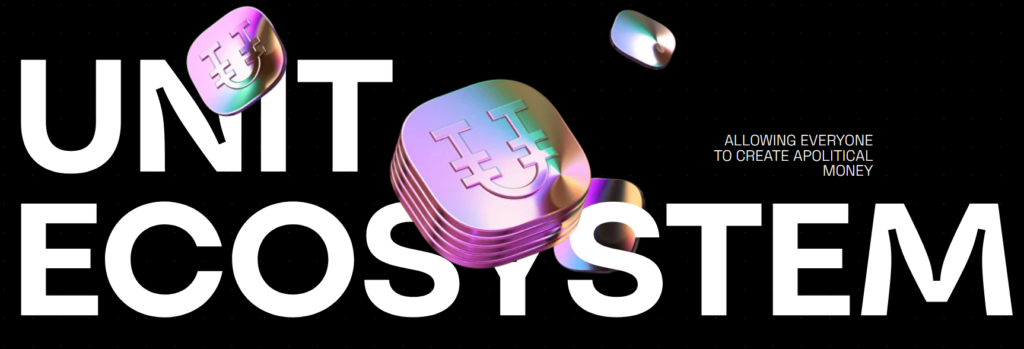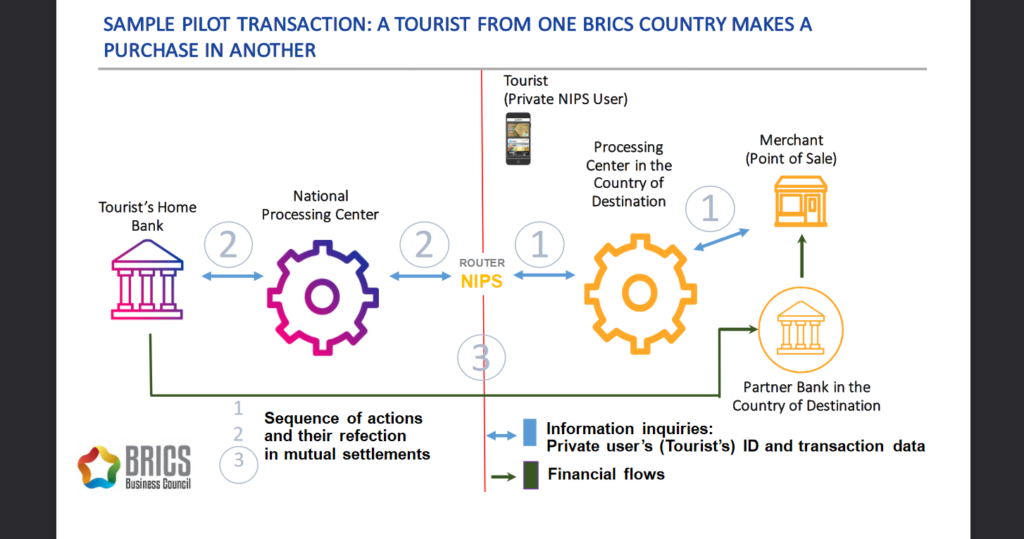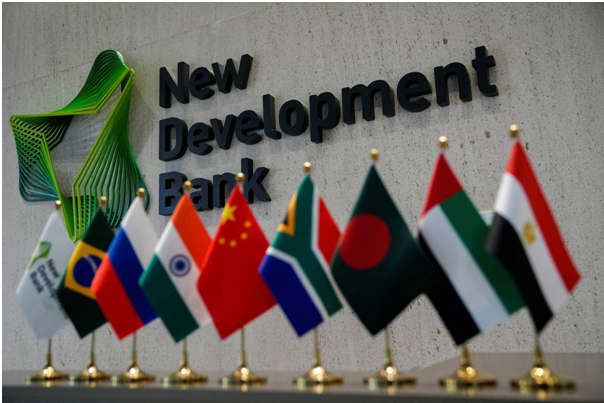BRICS Coin II – To Kazan and Beyond – Blake Lovewell
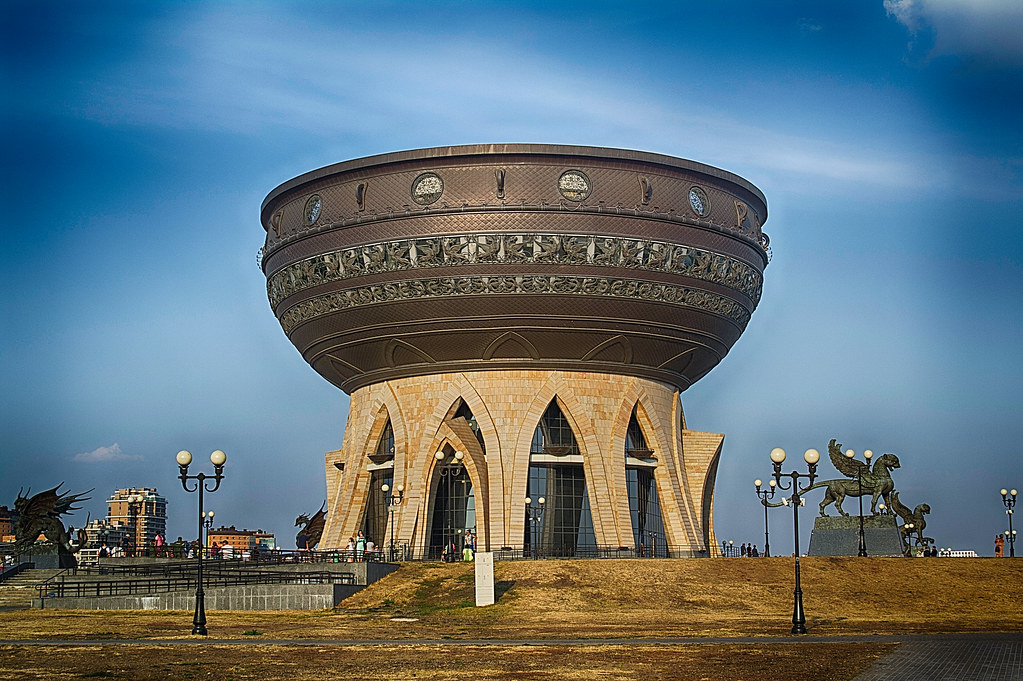
BRICS+, a group of non-Western nations, are developing a parallel set of financial institutions. In response to Western sanctions and financial domination they have decided enough is enough, and that they will build their own monetary system, outside of dollar hegemony. This is the second part of my BRICS Coin series examining the many facets of the emerging BRICS currency trends. In it, we will look at the new institutions that have been announced and what we can expect going forward.
To Kazan
Russia is hosting the BRICS annual meeting this week. It takes place in Kazan, in Russia, and importantly in central Asia. The name Kazan comes from the name of a large cooking pot or cauldron used extensively in Central Asia, from Afghanistan to the Balkans. It is of cultural importance, a huge Kazan (or Qazan) is often the focal point of weddings where families come together to share from the communal pot. I think it is an apt metaphor for the emerging currency system that is being proposed ahead of the BRICS summit. All members are invited to create a central pot, whereby they can partake in the communal success of the bloc. One thing is for sure, America is not invited to the wedding.
De-Dollarisation
As I outlined in my prior article, BRICS coin – The Unit vs. The Dollar, there has been an excessive regime of sanctions levied against Russia and her compatriots by the USA and it’s quislings in Europe. This policy of sanctions, as well as the CIA coup in Ukraine, has pushed Russia away from the US’ hegemony. However the policy is a failure on the part of America, as it has pushed the BRICS bloc closer together. BRICS founders; Brazil, Russia, India, China and South Africa, as well as a large contingent of wannabe members, can all see the flouting of the rules based international order that the USA purports to follow.
Thus, they have begun the work in creating a payments system outside of Western control. For a century the US has dominated global finance, the US Dollar being the successor to the British Pound Sterling as global reserve currency. But it looks like BRICS is calling time on American dominance, and even the full might of the biggest army in the world cannot support it. I remind the reader that when asked, Paul Krugman, the leader of the US Federal Reserve let slip that “Fiat money is backed by guns”. The BRICS policy is not to ‘regime change’ to the next fiat currency, but to make the American fiat currency system obsolete by fostering its own institutions. I see this as a strong policy, whilst cautioning that diplomacy takes much longer than violence to achieve its end.
Russia
Russia is chair of the BRICS group for 2024. The BRICS+ (including Egypt, Ethiopia, UAE & Iran) is not a strict political institution, more often likened to a talking shop. However, in the last few years it has gained larger political caché and geopolitical importance. With the proposed accession of states like Nigeria and Saudi Arabia, BRICS+ will encompass a large share of global oil supply. With accession of NATO state Turkiye it will gain more importance to international relations. But the engine house of the BRICS movement is Asiatic, between Russia, India and China. Whilst no country rules the bloc – unlike ASEAN which China dominated – there is primacy among equals. I see Russia and China as dominant motivators among the group. Russia due to the sanctions regime and the hangover from the Cold War, and China as it has not been welcomed into the superpower fold by the USA and has pursued a route of diplomatic separation from the West. India is a reluctant yet energetic member of BRICS, still fostering ties with the West but playing on both fields at once. Brazil and South Africa are important but don’t have the clout of the former states.
That said; Russia, as chair of BRICS+, made clear that one of its key priorities would be economic integration of the member nations. Almost all of its priorities as chair emphasise the term ‘co-operation’. This is reflected in the nomenclature of the bloc when discussing institutions and agreements, that each is voluntary. To my eye this draws a distinction between BRICS integration and European Union integration. The EU seeks to tie its members in contractually and developed a European acquis or system of law. Witnessing the EU project struggle to keep balance with populism rising within, I believe the BRICS method is better suited towards their end of ensuring long-term stability of their new multipolar order.
Institution building
Ahead of the meeting in Kazan the Russian Central Bank and Ministry of Finance held a meeting. They put out a strikingly important document which tells us the mood and tempo of political change in BRICS+ and gives us insight into what might emerge from the Kazan summit. I will start with this excerpt which has Russia taking responsibility for re-shaping the global economy:
“We recognize the crucial role of BRICS in the process of improving the international monetary and financial system, with a view to making it more responsive to the needs of all countries and contribute towards sustainable growth of the global economy.”
Here we have a neat summation of the narrative which runs throughout BRICS policy. It includes encouragement of egalitarianism amongst states which casts shade on the Western dominated system – but without having to openly call it out. BRICS policy treads a line between obeying norms, and blazing a new trail. If it is too radical it will be shot down and fall victim to the status quo bias which demands continuity and stability. Yet that status quo is not serving BRICS+ members and necessitates change.
BRICS Cross-Border Payments Initiative
We then learn through this document about the parallel international payments structure that is coalescing amongst BRICS+. In my view there is a parallel institution for most of the existing institutions – which are controlled largely by Western powers. Firstly of note we have BRICS Cross-Border Payments Initiative (BCBPI) – a multi-currency system for international settlement. This is a clear competitor to America’s SWIFT system of international payments. The SWIFT system as it stands does not allow Russia to partake in transactions, furthermore any transactions which can be linked to Russia may also be censored creating an unworkable minefield for the global South. They make this clear in defining the BCBPI:
“We recognize the widespread benefits of faster, low cost, more efficient, transparent, safe and inclusive cross-border payment instruments that are built around the principle of minimizing trade barriers and non-discriminatory access.”
BRICS Clear
The next proposal by the BRICS is a clearing house, independent of the West. Clearing is the process by which complex trades in stocks and bonds are unfurled, and settled. A clearing house is the middleman in the interaction, formalising and guaranteeing the settlement. They also decide which banks may interact. This creates difficulty when a clearing house is located in the West and cannot, due to sanctions, allow interaction with Russian banks for example. Globally the most pivotal is the London Clearing House. BRICS+ propose BRICS clear as an alternative:
“We agree to further discussion on the feasibility of establishment of an independent cross-border settlement and depositary infrastructure, BRICS Clear”
BRICS Rating Agency
Another vital institution to be built is that of ratings agencies. Currently financial products, banks and even countries are rated by a small group of agencies based in the USA. These credit ratings agencies decide if your bond is good value, if your stock portfolio is worthwhile and give ratings like double A. They came into disrepute in the 2008 Great Financial Crash as they rated bundles of mortgages as safe and worthwhile investments, when really they were reckless speculative gambles with no solid backing. Then when the mortgage derivatives market crashed the corruption was revealed. Yet the ratings agencies are allowed to carry on their criminal activity as it props up the global criminal cabal. However, once again Russia and China have found it hard to receive accurate ratings from Western agencies and have levied the claim that they have been subjected to unfair downgrading. No surprise then that they wish to pivot to a BRICS Credit Rating institution.
BRICS (Re)Insurance Company
Another key institution which is often relegated to the niche economists is insurance. Not the kind of domestic car insurance providers – here we are talking about insurers who back nation states, who back huge trade deals and financial markets. It is vital for high-finance to have these bodies to back their deals otherwise the risk of the deal failing would make a deal unaffordable. The BRICS already has their New Development Bank and its Contingent Reserve Arrangements (a competitor to the IMF) to help bail out economies in turmoil. Yet what they are proposing here is a much deeper and more integrated institution:
“Further deepening of integration processes within BRICS requires the formation of a sovereign financial system of the member countries. We agree that an important component of such a system could be an independent reinsurance capacity. We agree to facilitate discussion to explore feasibility of possible solutions in this area, including BRICS (Re)Insurance Company”
BRICS+: New names, same games
Now I have outlined a few limbs on this fledgling sapling of an alternative financial structure. But before we go too far down the narrative that BRICS is cleaving a continent off from the mainland, and setting sail into the sunset, I wish to caveat. I believe that there are, embedded in their fine print, many ties to a global financial superstructure. Whilst it may appear that there is a great divorce in progress, I hold the view that there are powerful forces behind global finance which seek continuity and their plans are echoed throughout BRICS publications. These are also worthy of note and description.
ISO 20022
Firstly here I will raise the concept of ISO 20022. This is the programming language which is being used throughout CBDC architecture the world over. Whether it’s Nigeria’s e-Naira, Sweden’s e-kroner or the future e-Dollar, they all will be using ISO 20022. I did a deep dive on ISO 20022 in my ‘7 pillars of a Global CBDC system’ article, describing how it is a vital plank of the effort to create a global system of surveilled digital currency. As it is so prevalent it should be no surprise to find that we find reference to it in the BRICS proposal document, falling under the remit of the so-called ‘BRICS Payments Task Force (BPTF)’. On this subject we await the announced research paper “Approaches to drafting uniform rules for the ISO 20022 messages in cross-border payments among the BRICS countries supported by alternative financial messaging channels”. And to those readers who have made it this far I appreciate your longevity. This subject is difficult to grasp at points and the verbiage of high-finance is often hard to penetrate. Yet to simplify the last point: BRICS+, whilst seeming to pull away from a global financial system, is really partaking in a higher level global financial system that isn’t very different.
Further to this point I will add the presence of UN sustainable development goals. Throughout BRICS work we have littered these commitments to the UN’s SDG agenda:
“We encourage progressing the 2030 Agenda for Sustainable Development and commit to achieve stronger, greener, more sustainable and more balanced global development “.
Now for the regular citizen it might be nice to see that their globalised financial institutions, which have huge datacentres and fund war around the world, give a nod to the birds, bees and trees. However, throughout my research I have found that the SDGs have very little with helping nature, far more for taking nature from its rightful custodians and farming it off to financial speculators. Now here is not the time to discuss further this topic, I will point the reader to the incredible work of Whitney Webb and Iain Davis at Unlimited Hangout for a deep dive into the corruption. Suffice as to say that the BRICS rebel alliance has no intention of diverting from the global Agenda 2030.
Conclusion
And so, to Kazan.
We are at a critical juncture for the global economy. Global debt is tipping into the trillions. There is no obvious route for nation states to pay their debts, nor even to tend to them. I believe we are approaching a free-fall moment, a crash of sorts. I think, given the sums of debt and the globalised nature of the problem that it will be a much bigger wildfire than the 2008 crisis. Yet those big bankers have had over 15 years to re-arrange their plans and to foment their plots behind closed doors, and they are more ready than the regular people on Earth.
Central banks have been buying gold at a record pace. They are hoarding assets of real value in the face of the massive speculative bubbles of fake assets: paper gold, lent out to the tune of thousands of ounces for every one ounce of real gold, a bond market with no nation state able to back their bonds, not even the UK or US, among many other bubbles. Thus I look with trepidation at the best laid plans of Bankers and Billionaires.
On gold we must await the announcements of BRICS+ s to whether they will include gold in a new unit of account – The Unit (see my first BRICS Coin article for more). But we can expect the announcement of a tranche of alternative economic institutions. It will likely be these institutions which rise pyrrhic from the ashes of the next financial crash and begin rebuilding the world economy, in Russian, in Hindi, Mandarin, Portugese, Persian and Arabic. Yet for now it seems we must all wait with baited breath, and cling to our financial life rafts as the debt tsunami approaches.
Sources:
Krugman: Fiat Money backed by guns
youtube : /watch?v=MJWi8VUHUzk
Blake Lovewell: BRICS Coin – the Unit vs. The Dollar
Russia – BRICS priorities
https://www.brics-russia2024.ru/en/russia-and-brics/priorities
Russia MinFin and Central Bank Joint Statement of BRICS plans : Full Document
https://cdn.brics-russia2024.ru/upload/docs/BRICS_FMCBG_Statement.pdf?1728665606116285
BCPI: BRICS Cross-border Payment Initiative
https://geopoliticaleconomy. com/2024/10/19/brics-russia-multi-currency-system-us-dollar/
Jerusalem Post: BRICS Credit Rating Agency
https://www.jpost.com/business-and-innovation/precious-metals/article-822549
Blake Lovewell: 7 Pillars of a Global CBDC System
Whitney Webb, Iain Davis: Sustainable Debt Slavery

